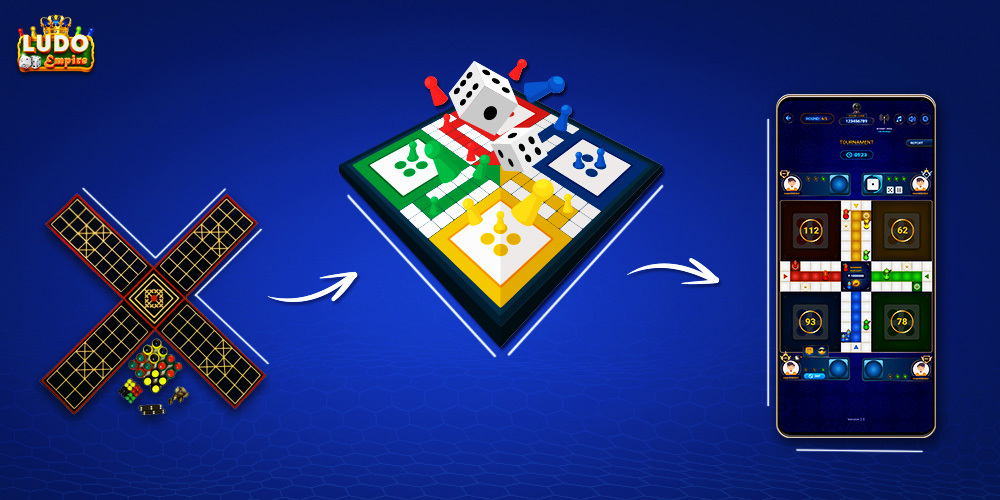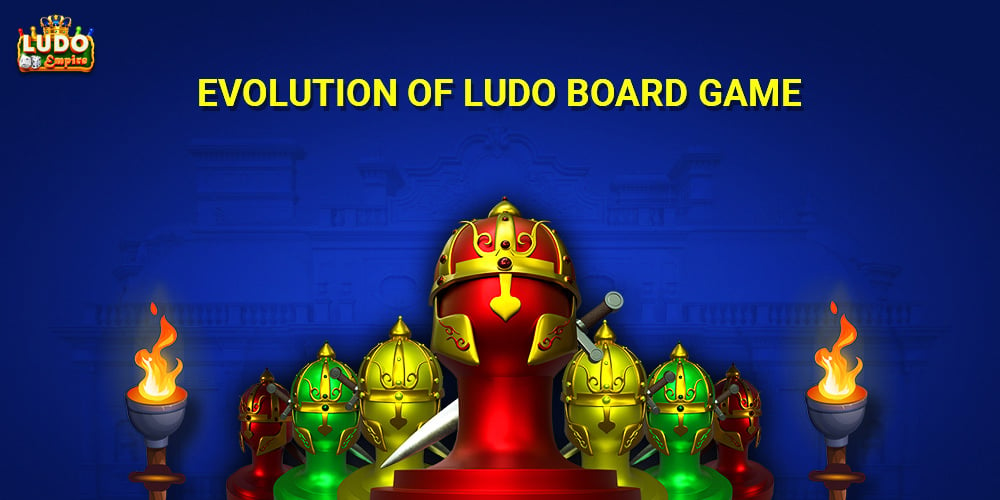Ludo is a classic board game that has entertained people for generations and has been a beloved pastime for many. Its simple and engaging gameplay has made it a major part of homes and social gatherings all over the world. While the base of most Ludo board games’s gameplay is similar to each other, the design of the Ludo boards and pieces has evolved significantly over the years as per the changes in culture, design preferences, and technology.
The Origin of Ludo
Ludo’s roots can be traced back to ancient India, where it was known as “Pachisi.” This board Ludo game, Pachisi was originally played on a cloth or wooden board, and the players used cowrie shells as dice and miniature figures or seeds as game pieces, also known as gotis. The board design was simple, with a cross-shaped path and a center square, and the objective of the game was for you to move all your pieces from the outer squares to the center before your opponents.
Pachisi was a highly popular game in India, and as time changed, its popularity increased. Within time, it was adopted by the Mughal Emperors of India and was then modernized with a few changes in the pieces and became known as “Chaupar”. The Chaupar game, while very similar to that of Pachish but instead of cowrie shells was played with 3 four-sided long dice.
The British Influence
With the arrival of the British colonial period, the Pachisi game made its way to England, where it underwent a transformation in ludo board game design and rules. It was rebranded as “Ludo,” derived from the Latin word for “I play,” by Alfred Collier, and became a popular game among the British elite. The game’s design was altered from the original design of the game board to include a square board divided into a grid of smaller squares and the traditional Indian cowrie shells were replaced with cubed dice.
The Modern Ludo Board
Today’s Ludo board design is a testament to the game’s enduring popularity. The game board consists of a large square divided into four different colored quadrants, with each quadrant featuring a circuitous path leading to a central end zone. The design is both visually appealing by being colorful and engaging and functional by being easily understandable and compatible with the Ludo rules, with clear distinctions between the different colored zones to prevent any confusion for players playing the Ludo game.

The Evolution of Ludo Pieces
The evolution of Ludo’s pieces is equally intriguing. In the early days of the game, players used a variety of small objects as game pieces depending on their availability and preferences, including seeds, pebbles, and even carved figurines. As the Ludo game gained popularity and became more standardized, so did the design of its pieces.
Wooden Tokens as Ludo Game Pieces
In the early 20th century, wooden tokens became the standard Ludo game pieces. These tokens were typically shaped like small discs and were painted in the four traditional colors of Ludo: red, blue, green, and yellow. They were easy to handle and added a tactile element to the board Ludo game.
Plastic and Acrylic Pieces
With the rise of plastic production and advancements in manufacturing, Ludo pieces began to be made from plastic. This transition made the game even more affordable and accessible to a wider audience. Plastic pieces were durable and came in various shapes and sizes, but the classic round design remained the most popular.
In recent years, acrylic Ludo pieces have gained popularity. These transparent pieces add a modern twist to the traditional Ludo game and often come with vibrant LED lights, enhancing the visual appeal of the game board.
Ludo Personalization and Collectibles
As Ludo continues to evolve, many enthusiasts have taken to personalizing their game boards and pieces. Custom-designed Ludo boards and unique game pieces have become collectibles, showcasing the creativity and individuality of players. Some even incorporate themes from popular culture, such as movie characters or sports teams, into their Ludo game sets.
The Digital Era of the Ludo Board Game
As the popularity of the Ludo game seems prosperous and never-ending, it has made a seamless transition into the digital realm in the age of smartphones and tablets. Mobile apps and online platforms offer players the opportunity to enjoy the game virtually, connecting with friends and family from around the world. While the core gameplay remains the same, the digital versions often feature animated pieces and interactive elements that add a new dimension to the experience.
One of the leading digital Ludo platforms in India is Ludo Empire. Ludo Empire is a Ludo board game online game where players can enjoy the traditional game of Ludo with players all across India and win real money as an added bonus. The game is similar to that of the original Ludo, consisting of a square board with four different colored tokens, in the shape of pawns and one single dice. Its easy gameplay, colorful attributes, multiple modes, and the ability to win huge cash prizes with only a small entry by using their Ludo strategies and skills are what have made it so popular with the players of the Ludo board online game.
Conclusion
The design and evolution of Ludo game boards and pieces are a testament to the game’s enduring popularity and adaptability. From the humble origin of Ludo in ancient India to its transformation into a modern, digital pastime, Ludo continues to captivate players of all ages. Whether you prefer the traditional wooden tokens or the high-tech allure of LED-accented acrylic pieces, Ludo’s evolution showcases the timeless appeal of this beloved board game. So, the next time you gather with friends and family for a Ludo game night, be it with a traditional board of Ludo or with the Ludo Empire online platform, take a moment to appreciate the history and design behind the Ludo board and pieces that bring joy to countless households worldwide.
FAQs
1. What is Ludo, and how did it originate?
Ludo is a popular game that originated in India. It is believed to have been inspired by the ancient Indian game of Pachisi, the origins of which can be found in the Indian epic, Mahabharata. Ludo’s name comes from the Latin word for “I play”.
2. How have Ludo gameboards evolved over time?
Ludo game boards have evolved from traditional wooden boards to various materials like cardboard and plastic. They now come in various sizes, designs, and themes to cater to different preferences. With the gameboards evolving, certain rules for them have evolved too, mostly the dice and token rules that make each gameboard as unique as the others.
3. What is the significance of the design and colors used in Ludo boards?
Ludo boards typically feature a cross-shaped design with four colors – red, yellow, green, and blue. The design and colors help players easily identify their pieces and paths to avoid any confusion. Each color represents a player or team that they want to represent.

